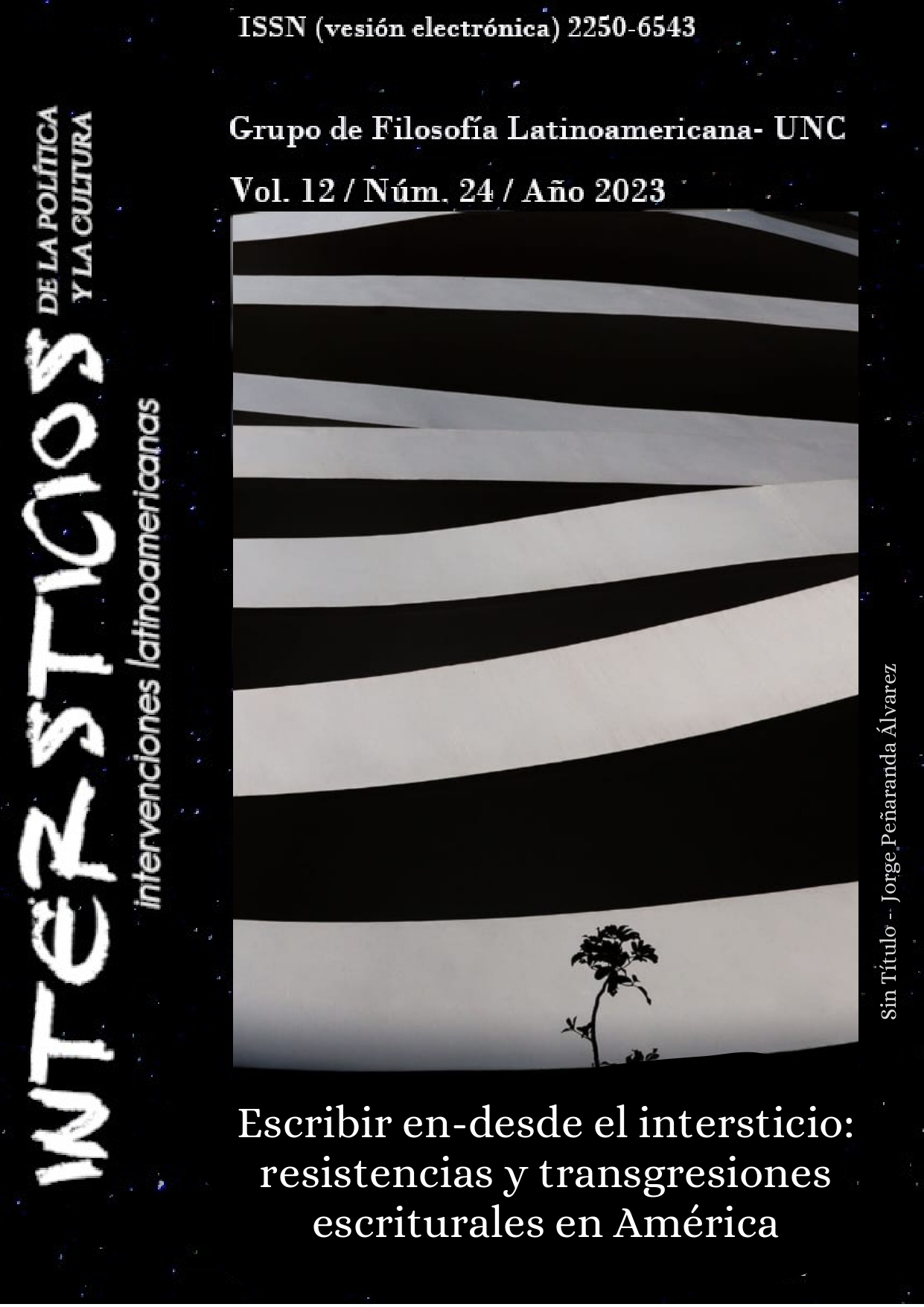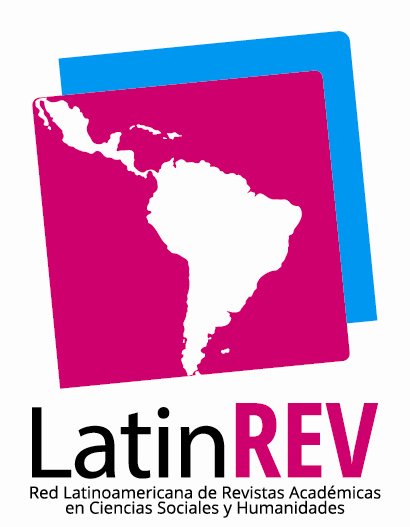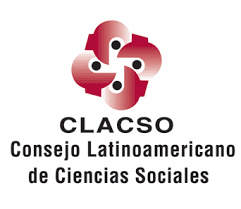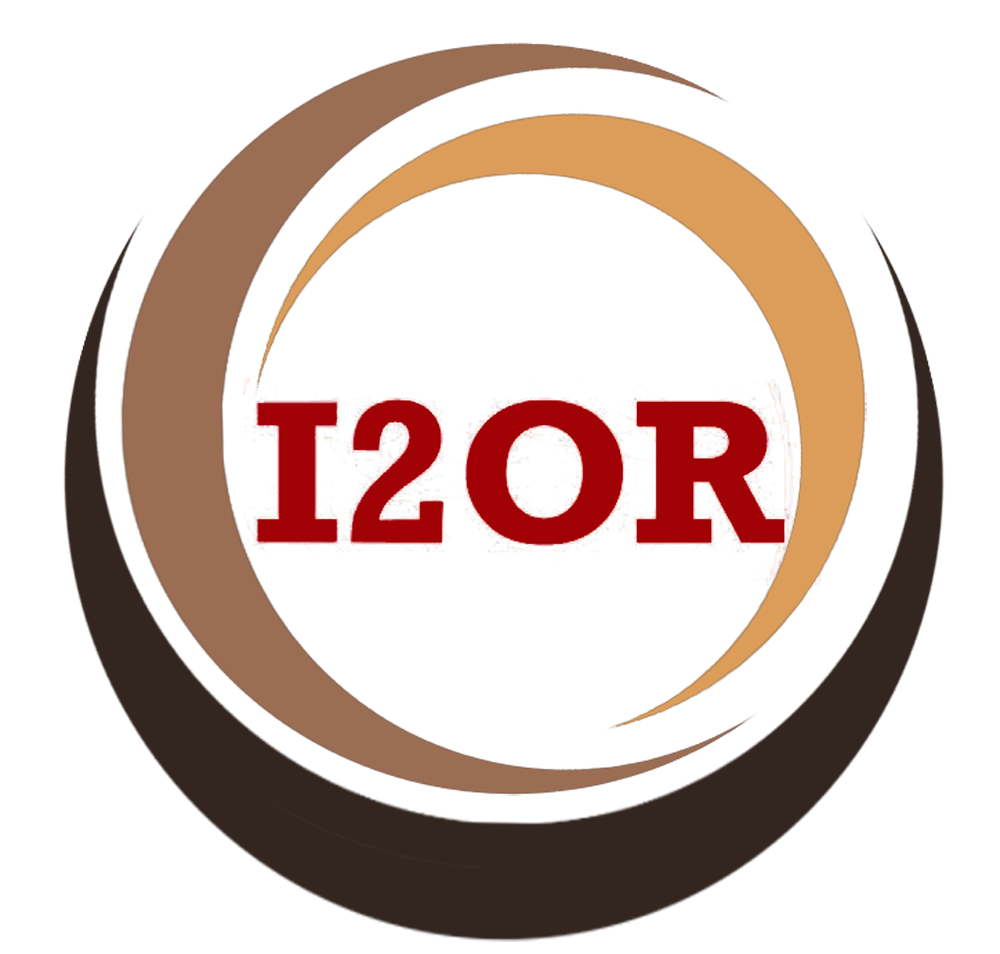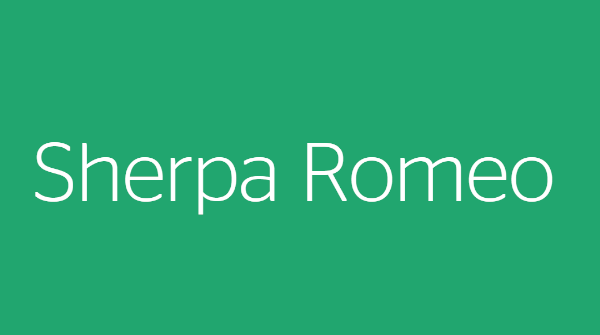The image as a method in the “Latin American” question. Sketches and dispersions from the poetics of Emma Villazón
Keywords:
baroque, image, Latin American thought, anachronyAbstract
This paper explores the possibilities and implications of a baroque critique within the poetics of Emma Villazón and the movie The great movement by Kiro Russo. The baroque as an unfinished device allows us to make connections with the possibilities of the essay as form. If the Lezamian image unfolds as a method, this implies giving way to the torrent of anachrony and contingency and to the heterogeneous and fragmentary as the vital core of the works of art. Sarduy's notion of a hypertelic art, —art that goes beyond its limits—, complicates the debate on the relationship between image, writing and the (fictitious) border that delimits them both. At the same time, baroque decentralization, hand in hand with notions such as Latinamericanism (Rodríguez Freire, 2020), Raúl Antelo's archiphilogical proposal (2013), the baroque as critical survival and reading machine (Díaz 2015, 2021) and the development of Silvia Rivera Cusicanqui's sociology of the image (2015) and her Ch'ixi approach (2010), allow us to rethink some categories of the Lezamian essayistic such as "syncretism" or indiátide or even to deepen the debate on the notions of frontier or nation-state. This becomes especially possible as the baroque resurfaces symptomatically throughout different moments of "Latin American" art as a symptom or malaise of modernity. The question of method and its political implications lead us to try to follow —rather than slow down or delimit— the associative progression of the image in the works. In this way, the figure of Jaime Saenz's aparapita or expressions of the Andean baroque appear throughout the work as survivals and forms of insurrection or counter-conquest.
Downloads
References
Antelo, Raúl (2013). Para una archifilología latinoamericana. Cuadernos de literatura, vol. XVII, nro. 33, 253-281. Recuperado de https://revistas.javeriana.edu.co/index.php/cualit/issue/view/495
Benjamin, Walter (1990). Origen del drama barroco alemán. Madrid: Taurus.
Bocco, Andrea (2015). Literatura fronteriza: un modo de emergencia de la heterodoxia literaria. C. Corona Martínez y A. Bocco (Comps.), Más allá de la recta vía: heterodoxias, rupturas y márgenes de la literatura argentina (pp. 59-72), Córdoba: Solsona.
De Campos, Haroldo (1989). O sequestro do Barroco na Formação da Literatura Brasileira. O caso Gregório de Matos. Salvador: Fund. Casa de Jorge Amado.
Díaz, Valentín (2021). El error neobarroco. Falla metodológica y supervivencia crítica. Landa, vol. 10-1, Universidad Federal de Santa Catarina.
Díaz, Valentín (2016). “Walter Benjamin. La actualidad de la arqueología filosófica y el futuro de la filología”. Filología. Buenos Aires: UBA.
Díaz, Valentín (2015). Barroco y modernidad en la teoría estética del siglo XX. Tesis doctoral. Universidad de Buenos Aires, Facultad de Filosofía y Letras. Disponible en http://repositorio.filo.uba.ar/handle/filodigital/4666
Didi-Huberman, Georges (2015). Ante el tiempo. Historia del arte y anacronismo de las imágenes. Buenos Aires: Adriana Hidalgo.
Didi-Huberman, Georges (2012). Supervivencia de las luciérnagas. Madrid: Abada.
Giordano, Alberto (2015). “Prólogo. El discurso sobre el ensayo” en El discurso sobre el ensayo en la cultura argentina de los 80. CABA: Santiago Arcos editor.
González Almada, Magdalena (2022). “Territorios textuales disidentes: leyendo con María Lugones las literaturas de Bolivia”. Revista de Estudos Feministas, 30(1), 1-12.
González Almada, Magdalena (2017). Relaciones de poder, imaginarios sociales y prácticas identitarias en la narrativa boliviana contemporánea (2000-2010). Tesis de posgrado. Córdoba: UNC, FFyH. Disponible en https://ffyh.unc.edu.ar/publicaciones/tienda/publicaciones-de-investigacion/seicyt-posgrado/tesis/relaciones-de-poder-imaginarios-sociales-y-practicas-identitarias-en-la-narrativa-boliviana-contemporanea-2000-2010/
González Almada, Magdalena (2016). Territorialidades, textualidades. Torsiones y configuraciones en textos de Juan Pablo Piñeiro, Sebastián Antezana y Liliana Colanzi. SAGA. Revista de Letras, N° 6, segundo semestre, 1-27. Recuperado de https://sagarevistadeletras.unr.edu.ar/index.php/revista/article/view/93/83
Ighina, Domingo (2000). Territorios desplegados. Los ensayos de reconfiguración de la Nación. En D. Ighina et. al. Espacios geoculturales. Diseños de Nación en los discursos literarios del Cono Sur. 1880-1930 (pp. 15-49). Córdoba: Alción.
Kusch, Rodolfo (1999). América profunda. Buenos Aires: Editorial Biblios.
Lang, Silvio (2019). Manifiesto de la práctica escénica en B. Hang y A. Muñoz El tiempo es lo único que tenemos. Ciudad Autónoma de Buenos Aires: Caja Negra editora.
Lezama Lima, José (1981). El reino de la imagen. Caracas: Ed. Julio Ortega. Biblioteca Ayacucho.
Perlongher, Néstor (1997). Prosa plebeya. Ensayos 1980-1992. Buenos Aires: Ediciones Colihue.
Richard, Nelly (2007). “En torno a las ciencias sociales. Saberes regladores y poéticas de la crisis” en Fracturas de la memoria. Arte y pensamiento crítico. Buenos Aires: Siglo XXI editores.
Rivera Cusicanqui, Silvia (2015). Sociología de la imagen. Miradas ch’ixi desde la historia andina. CABA: Tinta Limón.
Rivera Cusicanqui, Silvia (2010). Ch’ixinakax utxiwa: una reflexión sobre prácticas y discursos descolonizadores. Buenos Aires: Retazos-Tinta Limón.
Rodríguez Freire, Raúl (2020). La forma como ensayo. Crítica ficción teoría. Adrogué: Ediciones La Cebra.
Russo, Kiro (2021). El gran movimiento. Coproducción AltamarFilms, BordCadreFilms, SocavónCine, SovereignFilms. Bolivia: distribuidora: Best Friend Forever
Saenz, Jaime (2008). Prosa breve. La Paz: Plural editores.
Sarduy, Severo (1987). Ensayos generales sobre el barroco. Buenos Aires: Editorial Sudamericana.
Villazón, Emma (2016). Temporarias y otros poemas. La Paz: Perra Gráfica Taller.
Downloads
Published
How to Cite
Issue
Section
License

This work is licensed under a Creative Commons Attribution-NonCommercial-ShareAlike 4.0 International License.
Authors who have publications with this journal agree to the following terms:
a. Authors will retain their copyright and grant the journal the right of first publication of their work, which will simultaneously be subject to the Creative Commons Attribution License that allows third parties to share the work as long as its author and first publication in this journal are indicated.
b. Authors may adopt other non-exclusive license agreements for distribution of the published version of the work (e.g., deposit it in an institutional telematic archive or publish it in a monographic volume) as long as the initial publication in this journal is indicated.
c. Authors are allowed and encouraged to disseminate their work through the Internet (e.g., in institutional telematic archives or on their web page) after the publication process, which may produce interesting exchanges and increase citations of the published work (see The effect of open access).

